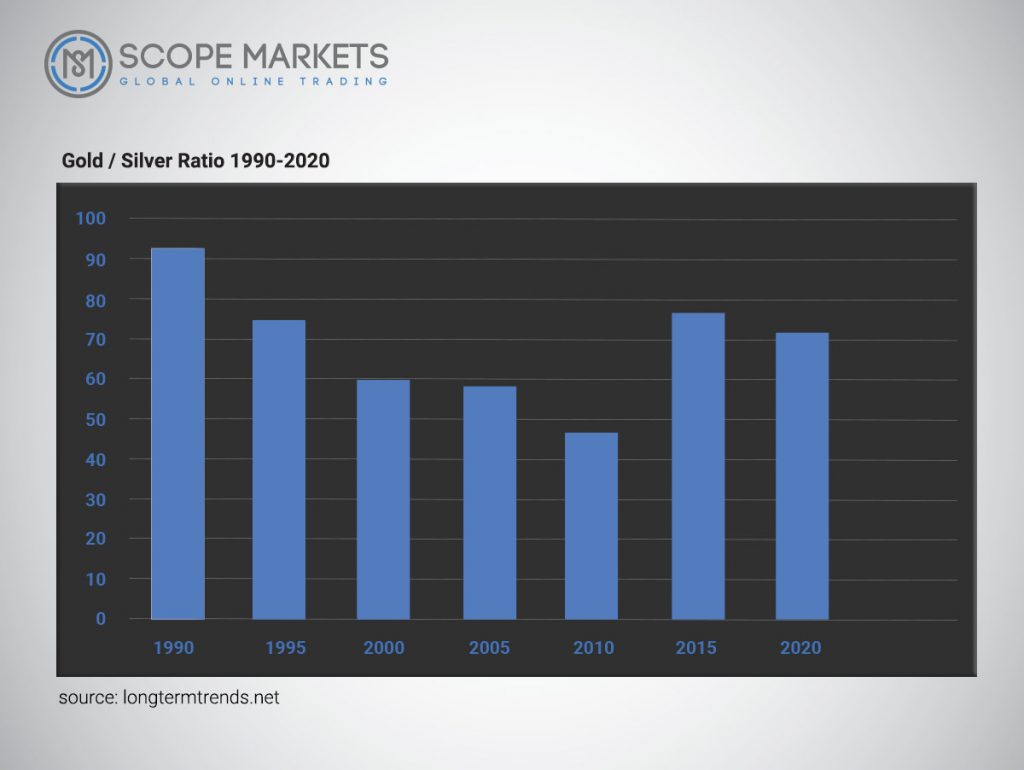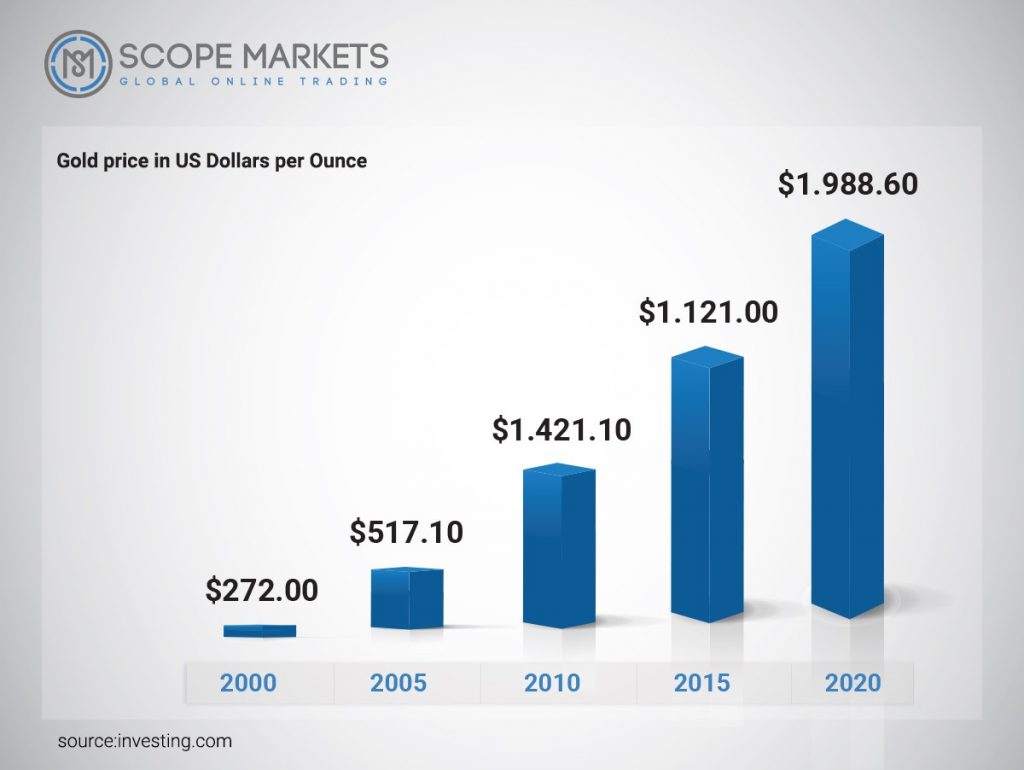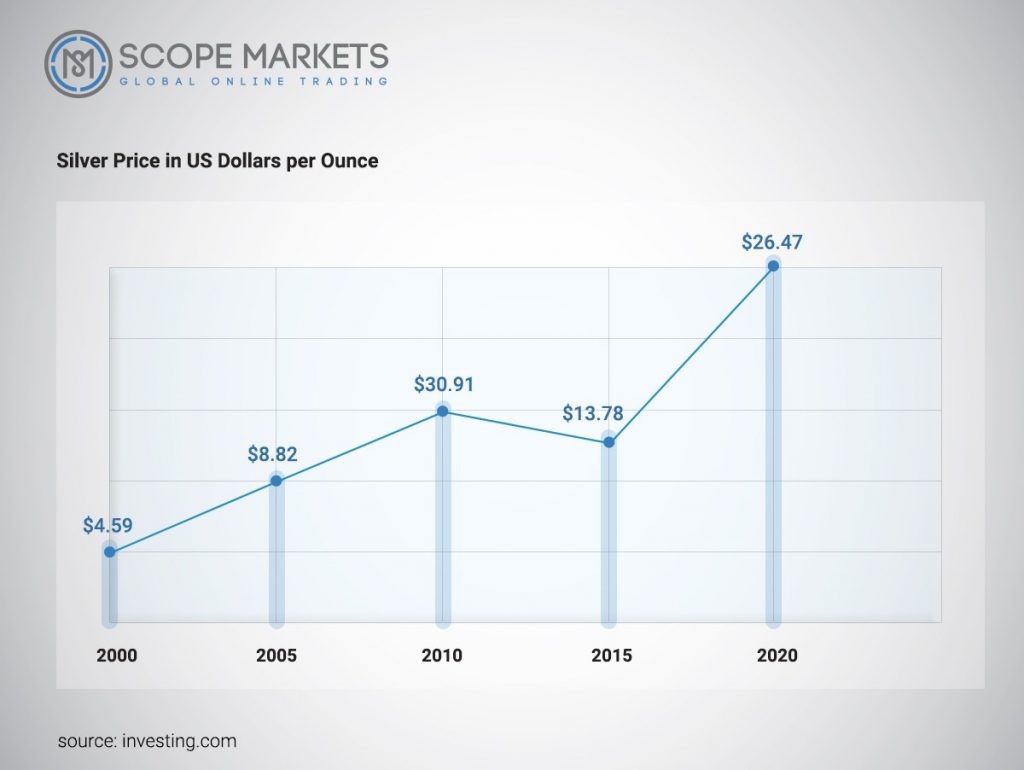Silver vs Gold – Why Historical Performance Matters?

Table of Content
Silver and Gold metals differ from each other in some ways. In this topic, we will cover Silver vs Gold – Historical performance, price, ratio between the two, top 5 highest and lowest years for the spot ratios. This will help to define the historical performances of these two precious metals, all the differences, pros, and cons of each metal.
Silver vs gold – historical performance and overview
All through history, individuals made use of both gold and silver in the sense of cash by creating cash coins from these two unique and valuable metals.
That created the silver-gold price ratio, an essential part of data in regular life. Any significant move apart from more common levels could charge you more if you considered silver instead of gold cash coins for payment. Or it could offer you a surprise benefit when the ratio abandoned its average value!

Amid the Middle Periods and the beginning of the 20th century, the historical point of the ratio for gold-silver increased from 12:1 in the Western part of Europe to over 16:1, with big changes over time. Big rifts also started with the ratio in bullion indices areas like India, which dealers could use for profit.
Sending gold to where it was much valued provided a considerable return in silver metal. It also assisted in closing these geographic breaks in the gold-silver ratio – a method known by current fiscal traders as arbitrage – by adjusting the scale of demand and supply in every regional market.
When we compare silver vs gold – historical performance, both gold and silver were broadly utilized as coins worldwide until 1900. Gold which was then modified to the yellow gold metal turned into a key financial metal to the extent of the Gold Standard, which was then driven from London (UK) by the British Federation. To fix the worth of money, gold gradually disappeared from the regular currency, which had changed to paper banknotes, and was secured inside state vaults.
Silver coins continued in the 1950s and 60s in the UK and the US. But the value of the metal had no stance on the value of cash, becoming only a symbol such as coins of copper or nickel.
The ratio timeline for silver vs gold
- The spot ratio of gold-silver touched a record growth of 132.4 in 1933 throughout the Big Depression.
- The corresponding ratio fell to a value as low as 17.9 before President Nixon caught the United States off the gold pattern in 1971.
- The initiation of the AEGSC or American Eagle Gold and Silver Coins let investors own the valuable metals straight. Thus, holding the ratio of gold-silver at higher levels.
- Currently, the gold-silver ratio has reached an all-time high value in the COVID-19 market, surpassing a value of 91.5.
Five highest years for the gold-silver spot ratio
The five highest years for gold-silver ratio were: 1941 – 101.4, 1939 – 100, 2020 – 99.3, 1940 – 98.6, and 1990 – 93.2.
Five lowest years for gold-silver spot ratio
The five highest years for gold-silver spot ratio were 1967 – 15.4, 1919 – 15.7, 1862 – 16, 1872 – 16.3, and 1874 – 16.6.
In silver vs gold – historical performance, the gold-silver ratio is one of the oldest and constantly followed exchange-rate in the past. This ratio is generally pursued because gold-silver prices have a well-developed link and are rarely varied from each other.
What spot ratio for gold and silver depicts

The spot ratio for gold-to-silver is a direct and relevant measurement. It shows the number of silvers unciae worth one uncia of gold. Since gold and silver prices may vary, the spot ratio shows the comparative worth of these 2 metals.
For approximately thirty years after the American Civil War, silver and gold prices were stationary related to each other. But, by 1900, with the Standard Act of Gold, the ratio had over two-folded from 16 to 34.5.
The 20th century then carried more unstable gold-silver ratios, going as high as 132.4 and pushing a four-day banking weekend in 1933 throughout the Huge Depression. After World War II, this ratio fell, finally approaching a low value of 17.9 in 1970. After a year, President Nixon finished the exchangeability of USD into gold.
When Nixon finished the Gold Standard in the year 1971, the spot ratio for gold-silver has been on a higher curve. In 1986, the Mint of the United States launched the coins of American Eagle Silver and Gold, letting shareholders own the valuable metals straight. Although it is yet to approach its Huge Depression figure of 132.4, its most current number from May 2020 keeps it at 91.5. This creates enough sense for some diverse reasons.
With joblessness going towards points earlier seen in the Big Depression and the share market challenging gravity in place of the original hit to the market, silver and gold prices return to unclear financial facts, same to everything else.
Stockholders might also be eager to keep riskier bets and follow the gain out of apathy and replace the need for sports. We do not understand what will happen to prices in the prospect. But there is a possibility that they will proceed to alter since the market either feasibly gets better or proceeds to decline.
5 years historical ratio comparison of silver vs gold
Though not confirmed, the ratio would generally grow all through valuable metals bear markets. This would indicate the break between their values increases and drops all through bull markets, signifying that gold turns out less precious in connection to silver. This is due to silver being a more unstable metal in comparison to gold. Thus, its cost would get radical variations based on the type of market.
The five years from 2011 to 2016 are an ideal instance of this. Since 2011, when the price of silver rose, the ratio had over two-folded. In April 2011, gold’s one ounce was valuing over thirty-one times above a silver’s ounce, and as of February 2016, that ratio has gone approximately 80: 1. Whereas the cost of both precious metals had fallen since then, silver had dropped to approximately a third of its 2011 worth, dropping from all over £29 for each ounce to only over £10 for each troy of an ounce in 2016.
To keep the present ratio into view, it was likely to own over 70 x 1kg bullion bars of silver for a similar sum of cash as a 1kg bullion bar of gold. The unpredictable quality of the silver price was the key cause behind the ratio’s inclination to vary to such a vast extent.
Whereas this was not the most crucial the ratio had always been, the silver value was rarely very low compared to gold. This created silver, a very effective investment metal in 2016. Since its price was meagre compared to gold, it created and engaged more in 2018, with the gold-silver ratio the most extensive since 2008.
Based on past inclinations, it is probable that valuable metals can undergo an extra boom. The price of silver could rise, stretching the ratio in a significant way.
Factors that affect the ratio of gold and silver

Silver and gold prices usually shift similarly day after day, but the amount of their changes differs much.
In the recent half-century, gold has equated a regular shift of 0.5% high or low in USD terms. But silver has shifted over 0.9%. This is because silver has a very small market compared to gold via value, about 1/10 the dimension. Thus, similar cash flow, in or out, would affect silver prices very hard. Also, that would shift its gold prices ratio to low or high.
Due to the silver market’s volume and volatility, risky trading in the metal is much bigger than gold.
Through its record high of summer 2019, the size of wagering on silver prices by options and Comex futures was equal to 175% of yearly mine production worldwide. It has also equated to 117% over the recent decade. For gold, in reverse, the recent 10 years’ common open credit in Comex derivatives compared to only 65% of 1 year’s international mine yield. Even initial 2020’s latest record growth in extensive gold interest has caught it alone to 109%.
Summary of historical performance – silver vs gold
Silver and gold are very volatile assets, and investing in them is not for everybody. They are not commodities that you may trade on regularly, and the sharp price changes involved with these metals can frighten anybody. So, you should always trade these metals in the long term. But if you have previously traded gold for seven years or more, then you are well on your part.
The same is valid for silver since it’s still not as popular among the predominant investors. When we compare silver vs gold – historical performance, we can then say that owning gold and silver can be a valuable hedge next to financial change. This can as well assist in balancing your portfolio, particularly in the sense of dollar uncertainty.
Disclaimer: This material is a marketing communication and shall not in any case be construed as an investment advice, investment recommendation or presentation of an investment strategy. The marketing communication is prepared without taking into consideration the individual investors personal circumstances, investment experience or current financial situation. Any information contained therein in regardsto past performance or future forecasts does not constitute a reliable indicator of future performance, as circumstances may change over time. Scope Markets shall not accept any responsibility for any losses of investors due to the use and the content of the abovementioned information. Please note that forex trading and trading in other leveraged products involves a significant level of risk and is not suitable for all investors.







